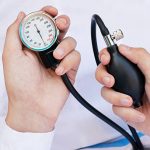The ONE organ responsible for high blood pressure.
White Coat Syndrome: What is its Causes and Treatment

What is white coat syndrome?
Some people find that their blood pressure is normal at home, but rises slightly when they are at the doctor's office. This is known as white coat syndrome or the white coat effect. The syndrome is named after doctors and medical personnel who sometimes wear white coats in a professional setting.
A healthy blood pressure is about 120/80 mm Hg. Anything above this value is considered high blood pressure.
What are its causes?
It's not uncommon for people to experience some anxiety when they visit a medical office. This increased anxiety can raise blood pressure.
White coat hypertension causes a temporary increase in blood pressure. While it may not seem serious if it occurs occasionally, some doctors believe that white coat hypertension can be a harbinger of true hypertension. One study found that people with white coat hypertension have an increased risk of developing:
- stroke
- heart attack
- heart failure
- other cardiovascular diseases.
- Another studyTrusted Source found that death from heart disease was strongly associated with white coat hypertension.









